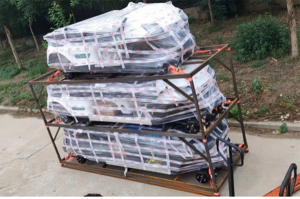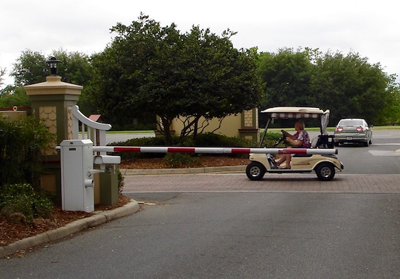Significant Changes in the Golf Car Manufacturing Industry and What it Means for Consumers
In the wake of the COVID crisis, major changes have emerged in the golf car industry and market. For consumers it means greater selection, more upgrades, and better prices. This trifecta of benefits is explored in Small Vehicle Resource’s extensive updated analysis of the industry, but here is an overview of what’s happening.
(While we have covered some of these developments before, this article brings the pieces together, and is timely, as we approach the 2023 PGA Show this coming January.)
Big Three dominance shrinking
The Big Three, otherwise known as Club Car, E-Z-GO, and Yamaha, have long dominated the manufacturing side of the golf car market. Historically, the major focus had been on the fleet market, that is, vehicles used on golf courses. Complementing the fleet market was the market for utility vehicles, transporters and refreshment carts.
In the 2010-2015 period the market for personal transportation vehicles (PTVs) began to emerge with emphasis on low-speed vehicle (LSVs) that were certified for use on public roads under certain conditions (e.g., typically, public roads with speed limit of 35 m.p.h. or less). The market for PTVs continued to grow at a moderate pace until 2020 and the disruptive impact of the COVID pandemic.
While the Big Three continued to carve up the fleet market—a market which was in slow decline, other companies, such as Tomberlin and StarEV concentrated on PTVs and were increasing their sales. The result was a slow shrinkage of the Big Three overall market share, and particularly
The COVID effect

The various lockdowns that characterized the most severe phase of the COVID crisis in 2020 seemed to have had a disruptive, but positive, influence on the demand side of the PTV market. The PTV became a true neighborhood vehicle, as the lockdown and cautionary procedures seemed to induce a desire to maintain contacts close at hand within neighborhoods and communities. Cash stipends from the federal government during his period are also likely to have had an impact, putting more cash in bank accounts, waiting to be spent.
The most telling circumstance in the 2020 situation was the fact that the PTV market had been growing for several years prior, and consumers in gated communities and beyond were clearly aware of the personal transportation vehicle, either through purchase or simply observing the ones their neighbor had purchased. What marketers call “the demonstration effect” had taken hold.
As a result of these various factors, demand skyrocketed. A good result for dealers was they were able to realize substantial markups over their price from the factory. The downside was a lack of supply.
The supply chain crunch compounds market disruption
Compounding the market disarray of 2020, was the supply chain crunch affecting global shipping and manufacturing, and thus crippling domestic golf car manufacturing through the lack of necessary parts and components. This resulted in a huge backlog of orders and delivery times stretching out to 12 months in some cases.
Although much of this had the most severe impact during the second half of 2020, the effects on domestic manufacturing remain to some extent to this day, late 2022.
A new logistic model emerging

The disparity between demand and supply, described above was not the only factor impacting the industry. In addition a new manufacturing/logistical model emerged. The new model consists of partially assembled kits, virtually all parts and components included, which are shipped to final assembly plants in the United States.
The kits, tightly wrapped, with about two dozen packed into a forty-foot equivalent contained, are ready for final assembly at close-to-market plant locations, mainly located in the south (South Carolina, Florida), southwest (Texas, Arizona), and Southern California.
Logical competitive advantages
The logistics/assembly system, as described above, has several apparent advantages, which suggest it is a model that is sustainable and not merely a stopgap process that will die on the vine, as “things return to normal”: In particular,
- Most of the parts and components of a typical PTV are already produced in China and have been for some time—manufacturing and design expertise is not lacking;
- Parts and components are likely to be more readily at hand in China, as compared to those same items shipped to the U.S. for full assembly;
- Partial assembly in China takes advantage of labor costs, which are much lower than in the U.S. (approximately 40-50% of typical U.S. factory worker hourly rate);
- The last point means that the labor cost value-added for the final assembly in the U.S. is, relative to domestic producers (Club Car, E-Z-GO, Yamaha), is significantly lower, even when adding in the partial assembly value-added in China;
- The previous point then implies that products sent to market under this system will be capable of undercutting the prices of products fully assembled in the U.S.
What are the volumes of imported subassemblies?
Imported golf cars, as compiled by the trade division of the U.S. Census Bureau, reveal an unprecedented increase in this category in 2021 and 2022 year-to-date, mainly from China (around 90-95% of the total). Are the subassemblies treated as finished golf cars in the statistics? A bit surprisingly, they are, according to Census Bureau analysts. As long as an import has all the parts needed for final assembly and are partially assembled, they are counted as an imported unit right along side a unit that arrives fully assembled.
Full analysis available in SVR’s update on the industry and market analysis
We define the market to include all golf car-type vehicles–essentially built on a golf car frame, including PTVs, fleet golf cars, and light duty utility vehicles. Full information on this important market report will be forthcoming prior to the 2023 PGA Show. An overview of the main features are:
- Market trends from 2017 and forecasts to 2028, both new and used;
- Electric vs. gas vehicles;
- Newest technologies and upgrades;
- A breakout of the data between imported subassemblies and fully assembled domestic vehicles, and full analysis of the implications for the industry’s evolving competitive structure.
Contact the Author: Steve Metzger at smetzger@smallvehicleresource.com. Or check out our website at www.smallvehicleresource.com, where you will find an extensive database of vehicle models and can make side-by-side comparisons of vehicles based on a full set of specifications.


